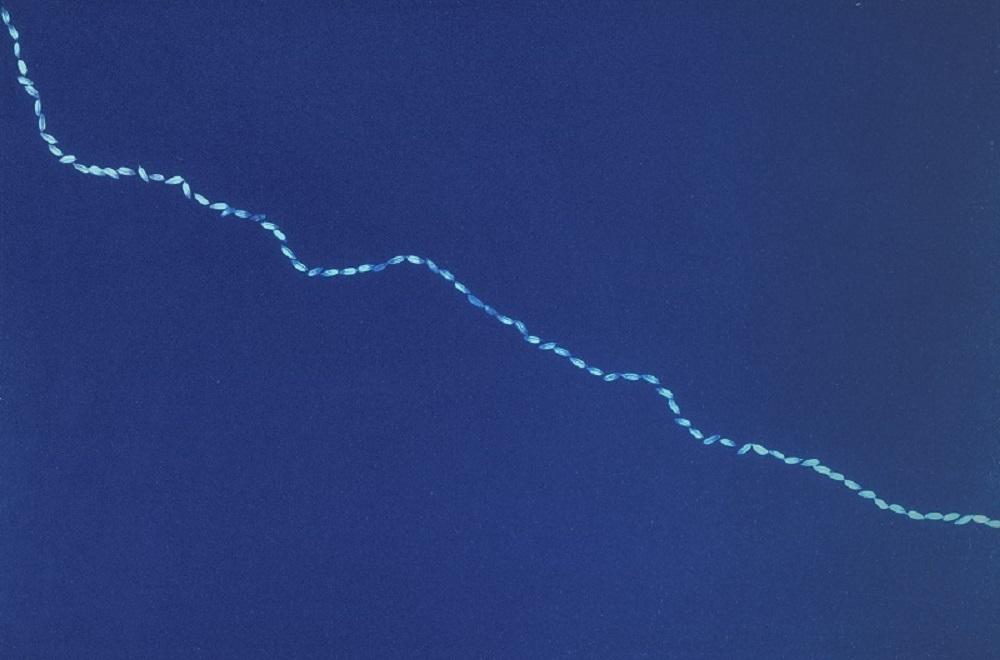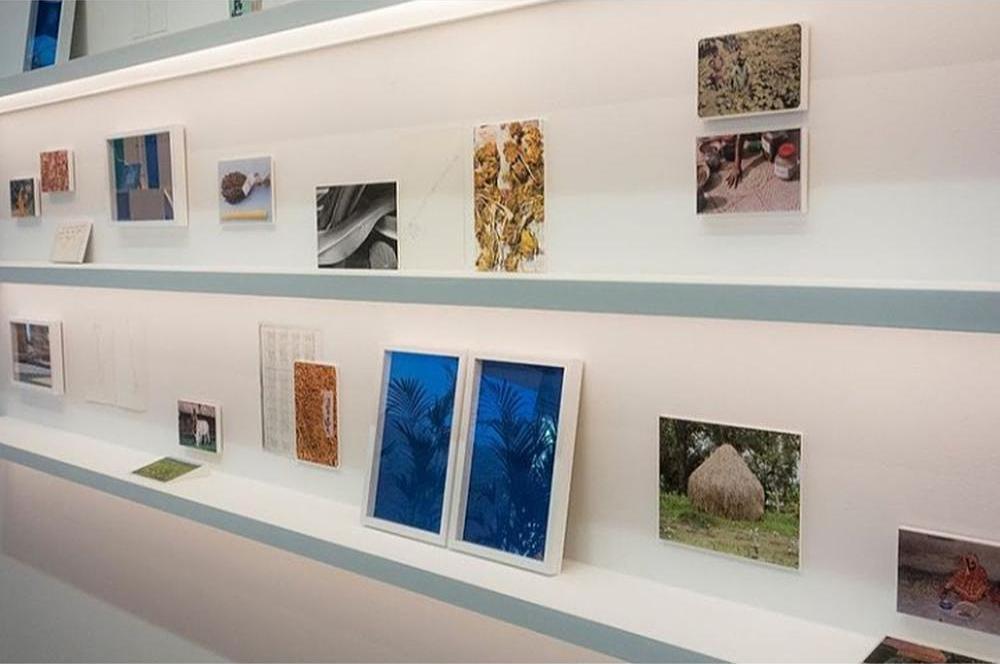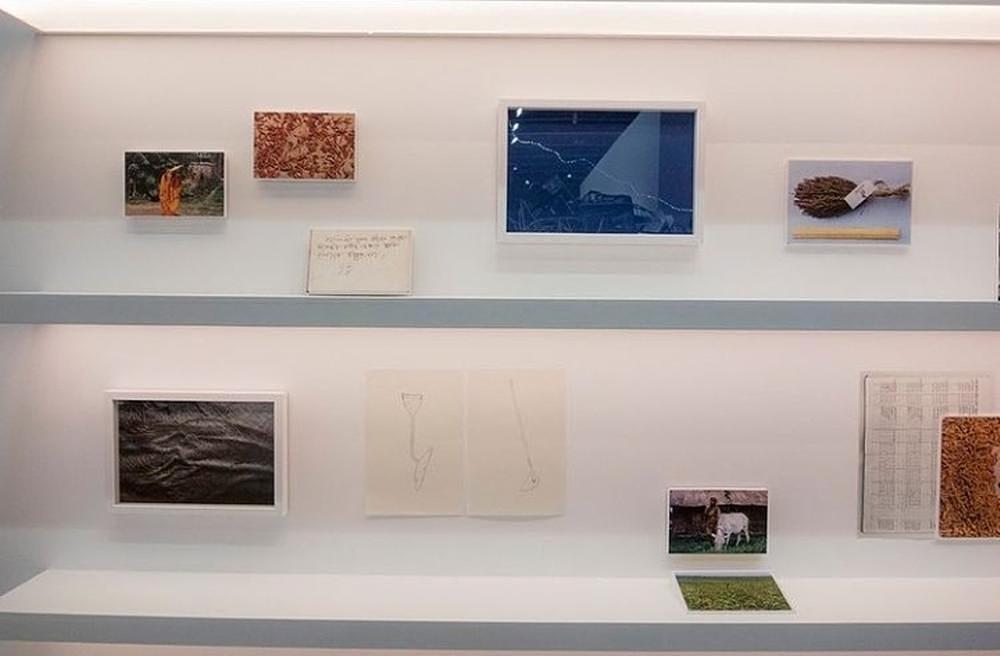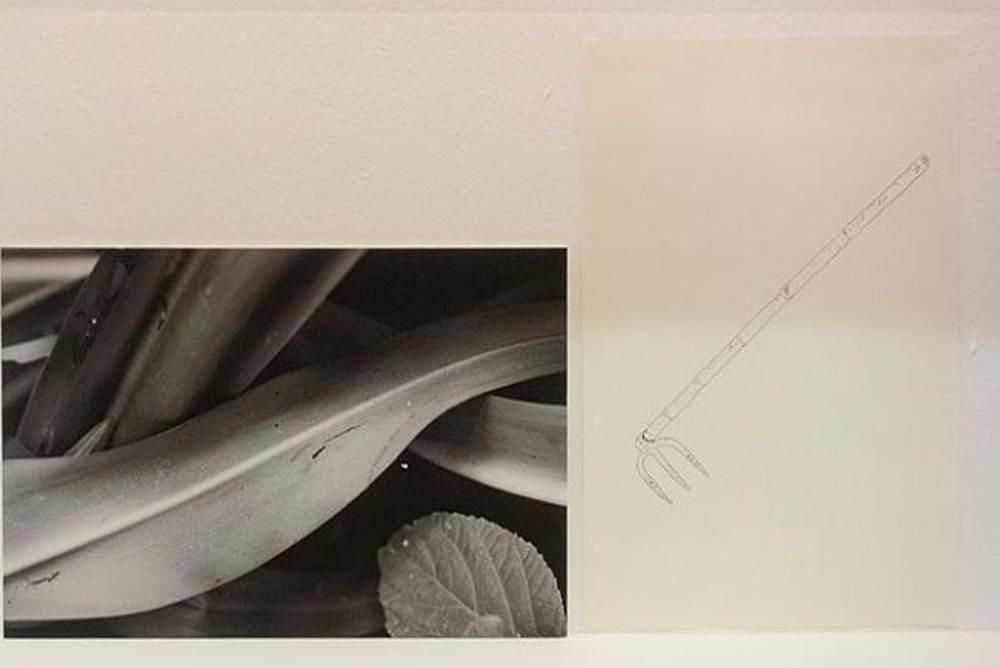Seeding New Visions: A Reflection on Munem Wasif's Seeds Shall Set Us Free II

Seeds Shall Set Us Free II (detail). (2016-17. Cyanotype Print. 35.5 × 24.3 centimetres. Image courtesy of the artist and Project 88, Mumbai.)
Exhibited at the Centre Pompidou and Taipei Biennial 2019, Seeds Shall Set Us Free II represents another move toward consolidating the core themes in the work of the photographer Munem Wasif. In the first articulation, we were given affective tones dripping with irony as his cyanotypes recalled the historically charged hues of indigo in Bengal and Bangladesh. The form of the delicate border recalled the textures of rope; using the ambivalent figure of this rope-border to make the viewer recognise the enforced transition from sustenance farming to the farming of cash crops like jute. Seed forms were carefully arranged to suggest their vulnerability to the twinned forces of colonial disruption and environmental damage.
Wasif’s records, documents and prints—collected from the archives of an alternative grain bank and research center Unnayan Bikalper Nitinirdharoni Gobeshona or UBINIG (Policy Research for Development Alternatives)—showcase a history of engagement and struggle. The work was executed in collaboration with UBINIG. A Dhaka-based organisation formed in 1984, UBINIG has been working against the corporatisation of agricultural practices, formulating policies promoting biodiversity in the region and opposing the use of hybrid seed varieties that exact damaging tolls on the soil. Indigenous agricultural knowledges and non-chemical alternatives to industrial standards can emerge through such networks of non-paternalistic solidarity, as they include the support of the Naya Krishi Andolan as well, which includes over 100,000 farming families.
In a project such as this, the artist’s voice is measured by its ability to creatively distort and re-educate the gaze of the audience. Taught to see nationally, farmlands and their buried histories of struggle are largely invisible to the modern citizen in South Asia. Instead, Wasif’s collaborative project seeks to multiply the different voices involved in these struggles and make them active participants in this field of vision. Cyanotypes, landscapes of farming fields, as well as hand written documents and photographs produced by researchers and farmers in the last few decades, are placed together to give a strong sense of the stakeholders involved and the material traces they leave in their struggle for legitimacy. These objects also suggest the equal agential force of beings and non-beings in the philosophy of the local farmers, which offer plural ways of thinking about the consequences of climate change in relation to agrarian reform and state mediation.

Seeds Shall Set Us Free II. (2019. Cyanotype Prints, Inkjet Prints, Photographic Reproductions of Drawings. Image courtesy of the artist and Taipei Fine Arts Museum.)
The call to action implied by the title of the exhibition recalls the revolutionary energy of Bijon Bhattacharya’s play about the Bengal famine of 1943 Nabanna—literally ushering in the time of a new rice. It creates a pathway for these political histories to appear in place of the romantic imagination of agrarian harmony in the national histories of South Asia. So, when cyanotypes of rice grains and plants are gathered in the same field of vision as archival documents and photographs from one of the largest community grain banks in the country, an ordinary gesture is made that teaches the viewer to supplement agricultural histories with politically informed languages of resistance.
With the new show, viewers are also asked to activate their reading of the archives, realise their historical potential and move into the arena of solidarity. A thin blue line of ropes and borders indexes the traumatic transitions from rice economies to cash crop economies like jute, but they also remind us about the persistence of political borders that seek to scupper such potential solidarities.

Seeds Shall Set Us Free II. (2019. Cyanotype Prints, Inkjet Prints, Photographic Reproductions of Drawings. Image courtesy of the artist and Taipei Fine Arts Museum.)
As Homi K. Bhabha would suggest, moments of scattering (or, dissemination—which borrows from the idea of “seeding”) are also opportunities for gathering and gleaning. It is no wonder that this language is intimately involved with the ways of describing how nations are seeded (and bordered) in the imagination. Through the carefully organised scatter of these archives, viewers are given a chance to construct newer visions of progress and disseminate these charged, everyday images in other spaces that are sites of romance and domination, instead of activity and political struggle.

Seeds Shall Set Us Free II. (2019. Image courtesy of the artist and Taipei Fine Arts Museum.)
All images by Munem Wasif. This work was originally commissioned for “Cosmopolis #2: rethinking the human” by the Centre Pompidou.




